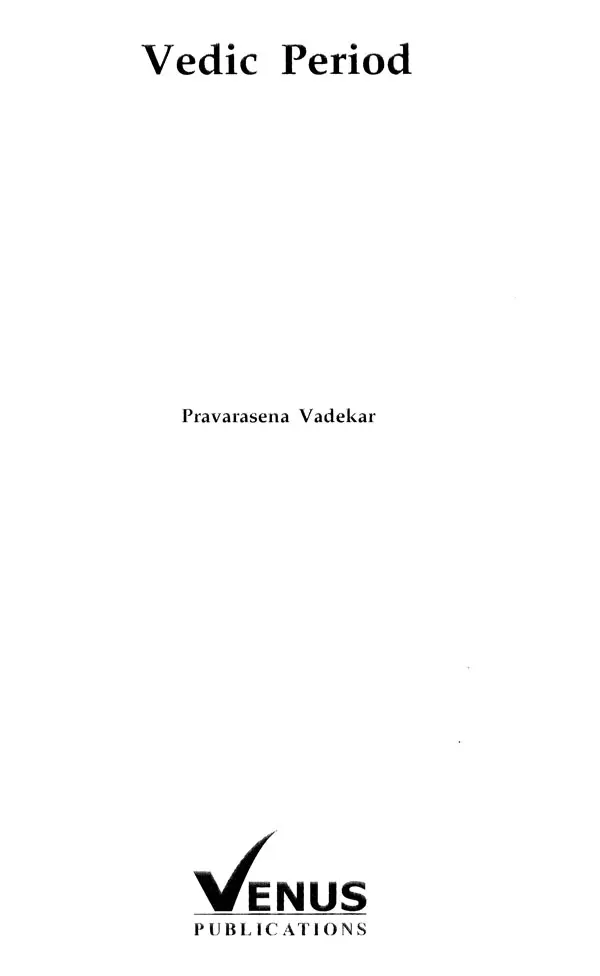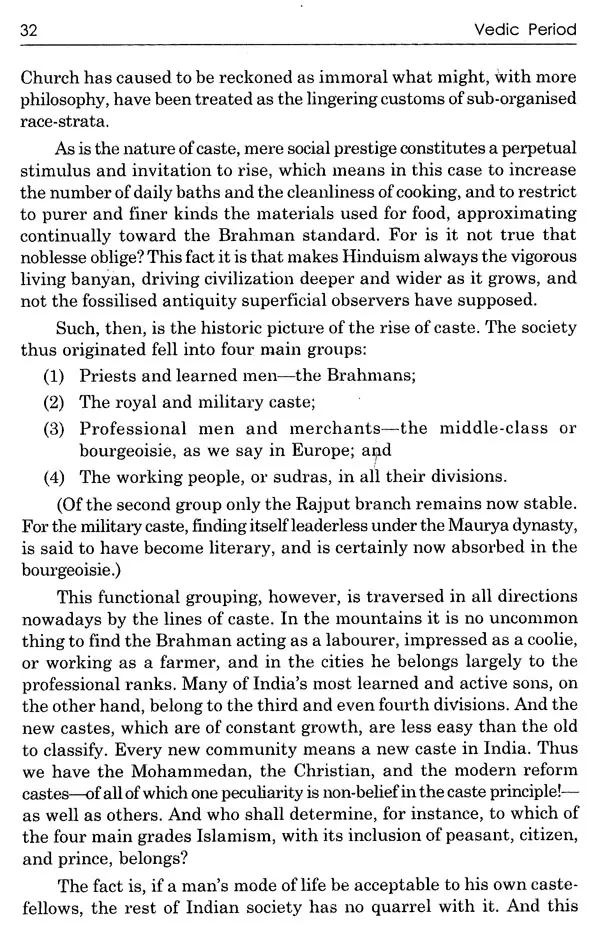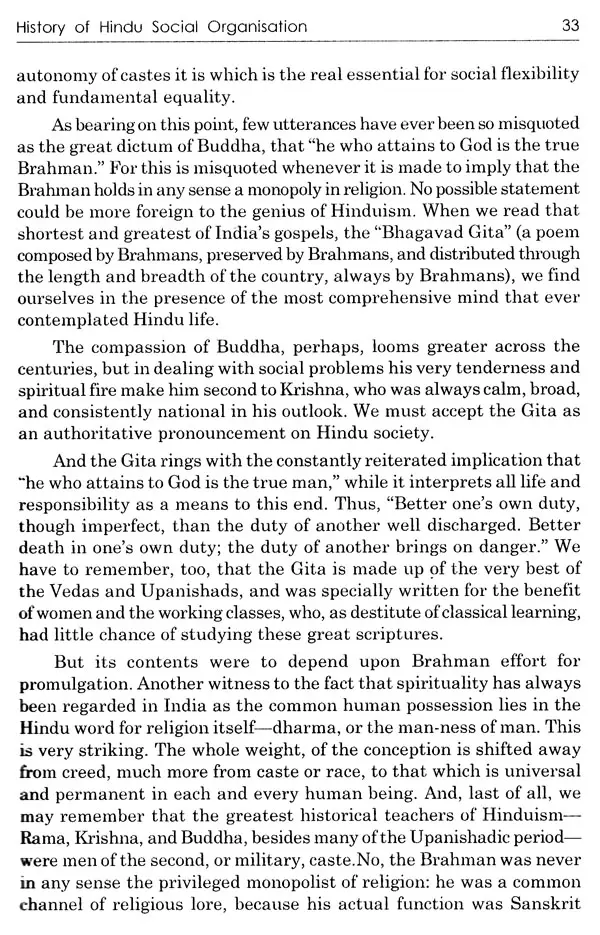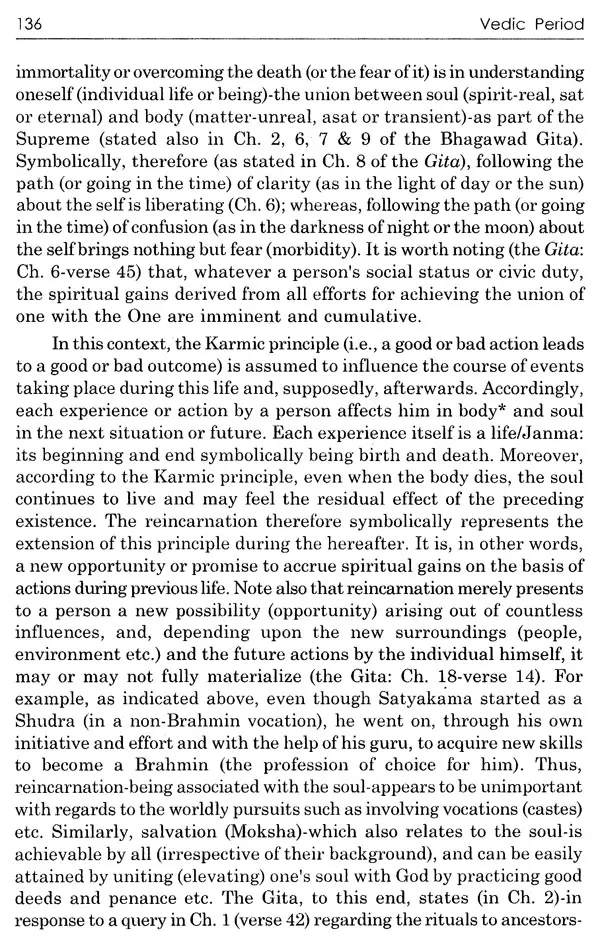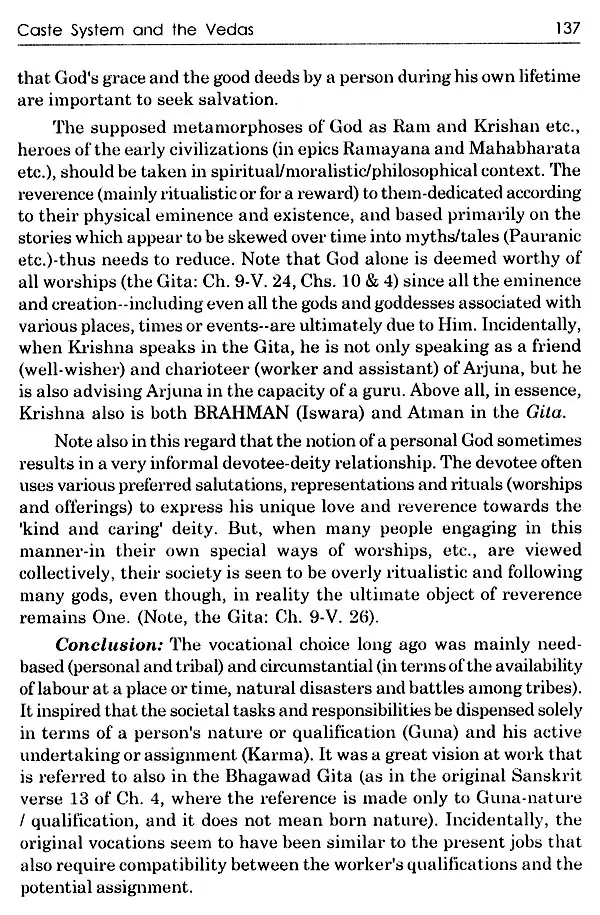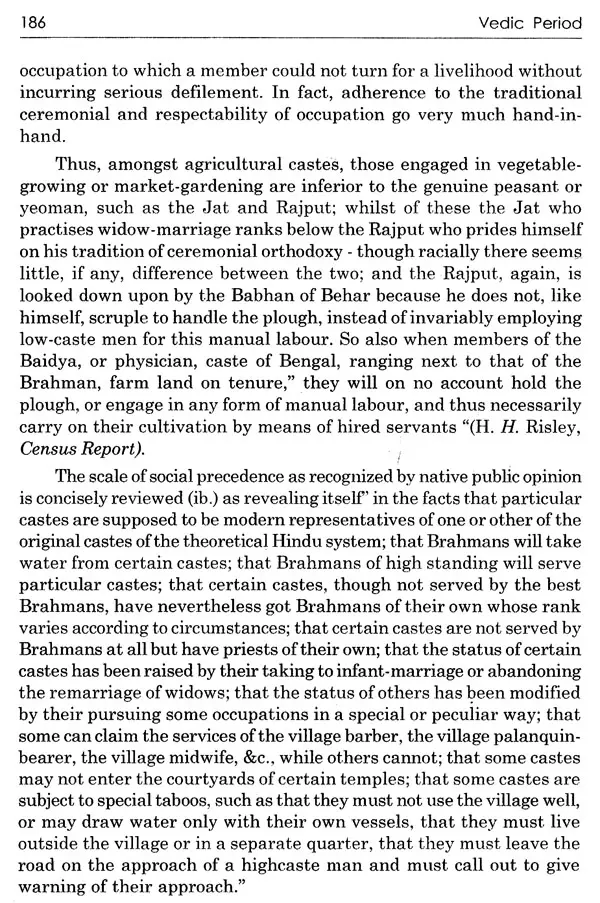
Vedic Period
Book Specification
| Item Code: | UAQ892 |
| Author: | Pravarasena Vadekar |
| Publisher: | Venus Publications, Delhi |
| Language: | English |
| Edition: | 2022 |
| ISBN: | 9788194765653 |
| Pages: | 245 |
| Cover: | HARDCOVER |
| Other Details | 9.50 X 6.50 inch |
| Weight | 580 gm |
Book Description
The Vedic Age is the "heroic age" of ancient Indian civilization. It is also the formative period when the basic foundations of Indian civilization were laid down. These include the emergence of early Hinduism as the foundational religion of India, and the social/religious phenomenon known as caste. This period of India's history lasted from around 1500 BCE through to 500 BCE, that is, from the early days of the Aryan migration into north-west India through to the age of the Buddha. The Vedas, the Mahabharata and the Upanishads formed the foundational writings of the Hindu religion, which was gradually taking shape in the Vedic Age. They show that the ancient Vedic religion was evolving into something different. This was probably to a large extent the result of influences from the older Dravidian populations over whom the Aryans ruled. During the course of centuries the Aryan nature deities lost much of their importance, and three new gods took their place Vishnu, the preserver; Shiva, the destroyer, and Brahma, the creator. It was during this period of history that ancient India developed its distinctive caste system. This important book is an effort to search and overview the most important yet controversial period of Ancient Indian History, Graduate history students and researchers will find this book useful.
Pravarasena Vadekar is an Assistant Professor in the Department of History, R.D. & D.J. College, Munger, T. M. Bhagalpur University, Bhagalpur, he has been contributing research papers in national and international journals as well as presenting papers in various seminars and conferences, he has published several books as soul author and is working on several literary projects
The Vedic Age is the "heroic age of ancient Indian civilization. It is also the formative period when the basic foundations of Indian civilization were laid down. These include the emergence of early Hinduism as the foundational religion of India, and the social/religious phenomenon known as caste. This period of India's history lasted from around 1500 BCE through to 500 BCE; that is, from the early days of the Aryan migration into north-west India through to the age of the Buddha. The Aryans were a people from central Asia who spoke an Indo-European language. They brought with them into India a religion based on the worship of many gods and goddesses. This ancient religion is depicted in collections of oral poetry and prose-hymns, prayers, chants, spells and commentaries-known as the "Vedas" These were composed at around the time of the Aryan entry into India and in the centuries following. They were written down many centuries later, long after the "Vedic Age", but much of what we know about this period of ancient Indian history is as a result of the faithful word-of-mouth transmission of the Vedas from one generation to another. The Aryan belief system that the Vedas reflect was distantly-related to those held by other Indo-European peoples of the ancient world, such as the Greeks and the Germans. However, some time in the centuries before they had entered India, the practice of fire ceremonies of the god Agni had become a focal part of their worship, a trait which they shared with their near-relatives, the Iranians (the word "Iranian" comes from the same root as the word "Arvan"). Another leading god was Indra, the High God. Also, the concept of the "Cycle of Life -reincarnation of the soul from one earthly life to another - also arose in this period.
The Aryans came into north-west India as pastoral, semi-nomadic tribes led by warrior chieftains Once in India, they settled down as rulers over the native Dravidian populations they found there, and formed tribal kingdoms. The different kingdoms were often at war with one another, and echoes of these violent times can still be heard in one of the greatest epics of ancient India, the Mahabharata", which has come down to us from this period of history. Another body of literature that was composed towards the end of the Vedic Age were the "Upanishads".
Originally, these were included in the Vedas, to which they formed commentaries; however, they were gradually separated out and assumed an identity of their own. The Vedas, the Mahabharata and the Upanishads formed the foundational writings of the Hindu religion, which was gradually taking shape in the Vedic Age. They show that the ancient Vedic religion was evolving into something different. This was probably to a large extent the result of influences from the older Dravidian populations over whom the Aryans ruled. During the course of centuries the Aryan nature deities lost much of their importance, and three new gods took their place Vishnu, the preserver; Shiva, the destroyer, and Brahma, the creator. It was during this period of history that ancient India developed its distinctive caste system.
This important book is an effort to search and overview the most important yet controversial period of Ancient Indian History Graduate history students and researchers will find this book useful.
Book's Contents and Sample Pages
